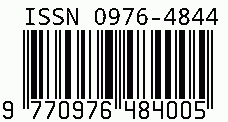
Journal of Advances in Developmental Research
E-ISSN: 0976-4844
•
Impact Factor: 9.71
A Widely Indexed Open Access Peer Reviewed Multidisciplinary Bi-monthly Scholarly International Journal
Plagiarism is checked by the leading plagiarism checker
Call for Paper
Volume 16 Issue 2
2025
Indexing Partners



















Microwave-Assisted Multicomponent Organic Syntheses: A Green Revolution in Synthetic Strategy
| Author(s) | Shuchi Kukreja |
|---|---|
| Country | India |
| Abstract | In recent decades, the increasing awareness of environmental sustainability and the urgent need to mitigate chemical waste have catalyzed the evolution of synthetic organic chemistry. Among the many innovative strategies aligned with the principles of Green Chemistry, microwave-assisted organic synthesis (MAOS) has emerged as a powerful tool that combines energy efficiency, accelerated reaction rates, and high product yields with operational simplicity. When merged with multicomponent reactions (MCRs)—which integrate three or more reactants in a single synthetic operation to form complex molecules—the result is a highly convergent, atom-economical approach that minimizes waste, reduces solvent use, and enhances selectivity. The synergy between microwave technology and multicomponent reactions is particularly impactful in the synthesis of heterocycles, natural product analogs, and pharmaceutically relevant scaffolds. This approach not only aligns with the twelve principles of Green Chemistry but also provides chemists with a sustainable pathway to complex molecular architectures with operational ease and enhanced functional group tolerance. This review presents a comprehensive account of microwave-assisted multicomponent reactions (MW-MCRs) with a focus on their green and sustainable attributes. It begins with an overview of the principles of Green Chemistry and the fundamentals of microwave heating. This is followed by a detailed discussion of various reaction types—solution-phase, solvent-free, and solid-supported—highlighting the role of reaction media, reactor design, and catalytic systems. Key synthetic examples and mechanistic insights are included to illustrate the efficiency and versatility of this technique. The review also emphasizes recent advancements, challenges, and future prospects in integrating microwave technology into greener synthetic protocols. |
| Field | Chemistry |
| Published In | Volume 16, Issue 1, January-June 2025 |
| Published On | 2025-04-07 |
| Cite This | Microwave-Assisted Multicomponent Organic Syntheses: A Green Revolution in Synthetic Strategy - Shuchi Kukreja - IJAIDR Volume 16, Issue 1, January-June 2025. |
Share this


CrossRef DOI is assigned to each research paper published in our journal.
IJAIDR DOI prefix is
10.71097/IJAIDR
Downloads
All research papers published on this website are licensed under Creative Commons Attribution-ShareAlike 4.0 International License, and all rights belong to their respective authors/researchers.

